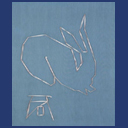0277 Eine Geschichte von Hasen: Zu Sigmar Polkes Rezeption des Feldhasen von Albrecht Dürer
Identifiers (Article)
Abstract
The article explores the role of Albrecht Dürer’s famous watercolour The Hare (1502) in the work of Sigmar Polke (1941–2010) who is considered one of the most prominent artists active in Rhineland in the post-war period. In his work, Polke repeatedly used visual materials from everyday life in West Germany, which he inserted as objets trouvés or as references and paraphrases into his paintings and other images. In art-historical and art-critical literature, Polke’s quotations of The Hare have been interpreted primarily in terms of the artist’s supposedly critical attitude either towards the mimetic character of Dürer’s study or towards the misuse of the Old Master’s imagery in consumer society. This article argues that the reflective potential of the presence of Dürer’s Hare in Polke’s work goes far beyond mere reference to the Renaissance artist and his study of nature. It will be shown that Polke’s reference to the Hare also comments on working methods of colleagues such as Joseph Beuys, Konrad Lueg and Dieter Roth. By paraphrasing Dürer’s Hare, Polke also reflects on the relationship between art and everyday life, blurring and questioning the established hierarchies.
Statistics


License

This work is licensed under a Creative Commons Attribution-NonCommercial-NoDerivatives 4.0 International License.



